The story of several dozen pilots who protected the skies of the capital in the first days of the full-scale war - NV reconstruction
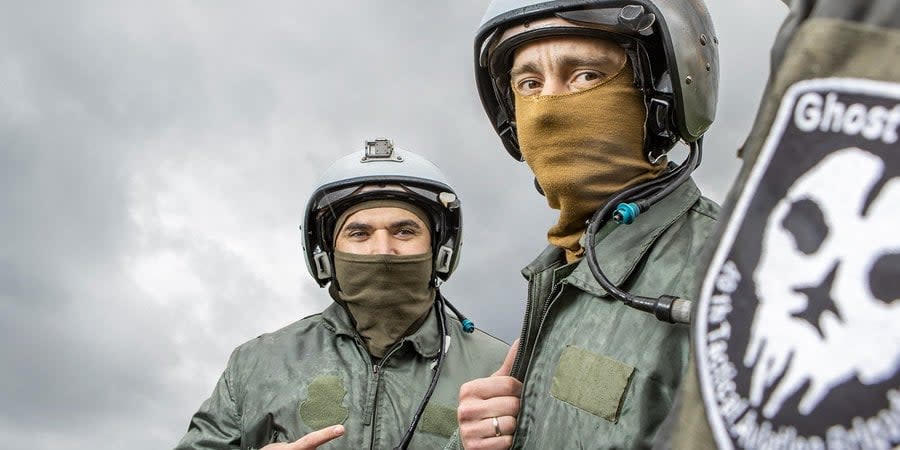
With the help of eyewitnesses, NV reproduced the events of the air battle during which Ukrainian fighters held off an armada of enemy aircraft, thereby saving the capital and the north of the country from methodical destruction.
Read also: ‘Dozens’ of Ukrainian pilots to start training to fly F-16s, air force reveals
Around 15:00 on February 24, 2022, Dmytro, a young MiG-29 fighter pilot (who withheld his last name for security reasons) was waiting for takeoff to defend Kyiv. At that time, he had already intercepted Russian missiles and lost communication with his brothers for the first time. It took him less than half a day to gain this experience: 11 hours before, at about four in the morning, he was on peacetime duty in the sky. It was there, between the clouds, where he met the beginning of a full-scale Russian invasion.
One loss, which Dmytro learned about before his next takeoff, hit him especially hard. He heard on the radio that the Russians had killed his commander, Colonel Vyacheslav Yerko, in a dogfight.
The Air Command (VzK) Center subsequently said that Yerko had fought several engagements by that point. First against 12 aircraft and 8 enemy helicopters which had been sent to strike at Kyiv. Then the experienced commander knocked out an enemy Su-25 attack aircraft and several Mi-24 helicopters. However, during the next sortie, Yerko was killed by an enemy missile.
“There was an enemy interception,” Dmytro recalls.
“But because the enemy had an advantage in numbers, one Russian plane maneuvered, and the other two approached from the opposite direction and launched a missile [at Yerko’s aircraft].”
Yerko managed to eject, but the Russian invaders, violating all the rules of war, shot him in the air.
Dmytro did not have time for emotions at that point. He had to take off and complete his mission. However, after the death of his commander, the pilot decided to change tactics: to behave less predictably and maneuver more.
“When you understand what awaits you, your thirst for life intensifies,” he explains.
Read also: Ukraine’s ‘fighter jet coalition’ set to add more nations, additional aircraft than F-16s
“I still want to survive in different situations. It is clear that while on the ground you may be thinking about one thing, but when the cockpit hatch closes and you start the engine, then you switch and it’s as if you are entering a new world.”
At that time, messages of encouragement had begun appearing in local news and social media about a legendary Ukrainian fighter pilot who had shot down one enemy aircraft after another from the skies above the capital — the Ghost of Kyiv. Even government agencies wrote about him. The SBU reported that as of February 27, the pilot had already shot down more than 10 enemy aircraft.
Over time, the Ghost would be credited with shooting down 40 aircraft. However, at the end of April, when the Russians had already been ousted from Kyiv Oblast, Air Command admitted that in reality, the Ghost of Kyiv had never existed. They said that it was not a singular person, but rather "a collective image of the pilots of the 40th Tactical Aviation Brigade who protect the sky over the capital." The size of the brigade has not yet been disclosed, nor the complement of its fleet, but Yerko belonged to this unit, and the young pilot Dmytro still flies in its ranks.
With the help of Dmytro, his brothers in his brigade, the commander Air Command, and military experts, NV has reconstructed the course of the first and most difficult battles for the skies over Kyiv, during which Ukrainian pilots thwarted the enemy’s plan to gain complete air superiority and received the national title of Ghosts of Kyiv.
First strikes
On the morning of February 24, during the first strikes of the war, the Russians launched over 155 missiles against Ukraine. In several waves, the enemy struck all the radar units of Ukraine’s radio engineering forces (the eyes of the Air Force), along with airfields, air defense positions, and command posts, Lieutenant General Anatoly Krivonozhko, the commanding officer of Air Command, told NV. The enemy was trying to suppress Ukraine’s entire air defense system and gain aerial dominance.
The Russians fired more than 30 missiles at each airfield to prevent Ukrainian pilots from taking off and countering the enemy. However, parts of Ukraine’s fighter fleet managed to be withdrawn from the attack and redeployed to alternate airfields.
This was the case with the Vasylkiv Airfield about 40 km south of Kyiv, where the 40th Ghost Brigade is based. On the first day of the full-scale war, 25-year-old fighter pilot Vyacheslav Rodionov, at the cost of his own life, covered his brothers from the air. He took off in his plane and diverted the enemy’s attention while his squadron mates dispersed.
“February 24 was a very difficult day,” Dmytro recalls. His first personal mission was to intercept a missile flying from the south. However, according to coordinates received from the ground, the young pilot never found it.
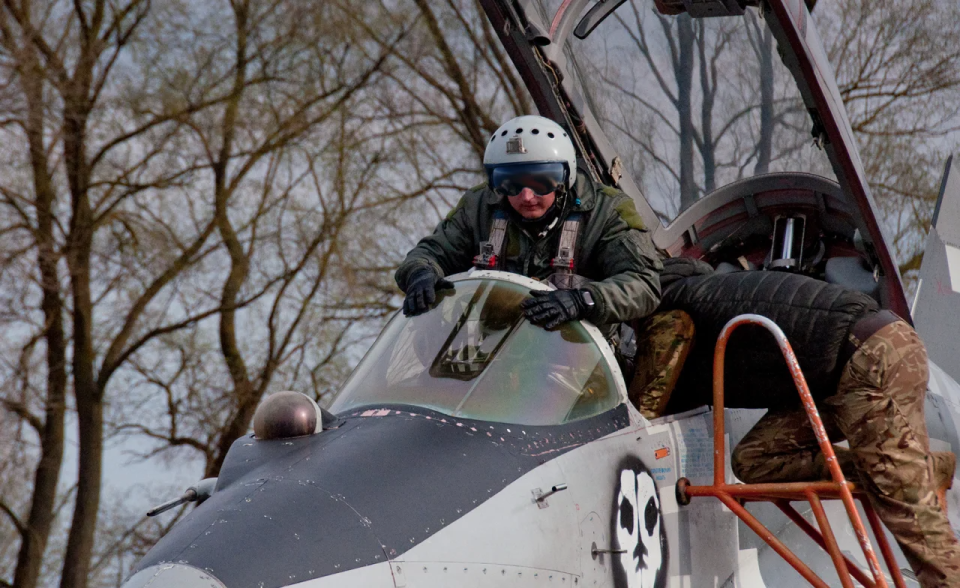
Russian aviation began to fly into Ukrainian airspace after the first missile strikes. The enemy attacked in the east, south and north. It was in the latter direction that it was the hottest, as the capital was the enemy’s main goal.
From the north, enemy pilots flew low along the bed of the Dnipro, using the terrain to try to remain invisible, Krivonozhko recounts.
Russian aviation then crossed the northern border, mainly by their bombers, attack aircraft, and helicopters, all without fighter cover. This whole armada entered Ukrainian territory in order to destroy critical facilities which had not previously been hit by missiles.
Meanwhile, Ukrainian aviation, withdrawn after Russia’s first strikes, was preparing for battle at reserve airfields. The pilots regained their composure, refueled, and within an hour and a half after the massive strike, they reached the Belarusian border, where there is a depression along the Dnipro. It was there, as the Air Command commander recalls, that Ukrainian fighters met the next wave of Russian aircraft.
The enemy did not expect this.
“During the first approach, when our fighters moved in, the Russians turned away and did not get involved in the fight,” says Krivonozhko.
“During the second approach, the situation repeated itself. They did not understand who was flying, because, according to their information, everything had already been destroyed: aviation, anti-aircraft missile forces, and so on. Only after the third round, at around 11.00-12.00 [on February 24], did very tough close air combat begin.”
At this time, the Ukrainian Radio Engineering (RTV) and Anti-Aircraft Missile Forces (ZRV) had also regained their bearings after the missile strikes. Therefore, for the first three days, as these forces were restoring their combat capability, it was the aviation that, according to Krivonozhko, did everything it could to win time by battling superior enemy forces.
“The anti-aircraft forces entered the battle after they had reconstituted,” explains Krivonozhko.
“The first battles were carried out by aviation. And it was due to the courage of our pilots that they managed to stop the enemy and earn a little breathing room.”
One against five
At the beginning of the full-scale invasion, Russian aviation outnumbered Ukrainian aviation by at least a factor of five.
Dmytro Tomenchuk, editor of the site Militaryaviation, tells NV that the difference in numbers was huge: about 500 enemy aircraft against 100 Ukrainian planes. In addition, Russian aviation was technologically superior. After all, all Ukrainian aircraft had been produced back in the 1980s and 90s. The enemy’s aircraft, on the other hand, was mostly of the newer generation, and their fighters had been commissioned in 2018-2019. They were mostly made of late Soviet or post-Soviet models, such as the Su-35.
“Their fighters, for example, are more advanced,” explains Tomenchuk.
“They have more modern radars and missiles, and are superior to us in terms of quality. In addition, the Russians have special aviation that works in tandem with their fighters and increases their capabilities.”
As an example, Tomenchuk cites the Russian A-50 reconnaissance aircraft, a so-called airborne radar which worked from the skies of Belarus, scanning the airspace over a large part of Ukraine. In addition, the Russians have electronic warfare aircraft.
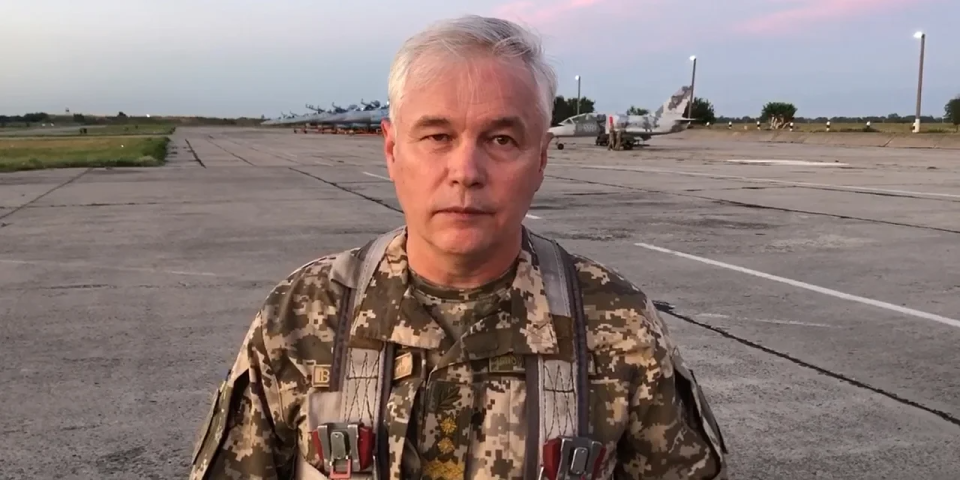
“They were also operating them to help their aviation,” Tomenchuk explains.
“We don’t have these types [of aircraft] at all."
As such, Ukrainian fighters were practically unable to conduct close combat with the enemy, Yuriy Ihnat, the chief spokesman of the Ukrainian Air Force, explained to NV. After all, enemy aircraft were able to see their opponents at least 100 km away and were armed with missiles with an active homing head. That is, a Russian fighter could take to the skies, launch missiles and fly away without risking themselves, leaving their missiles to find targets themselves.
But Ukrainian fighters were equipped with missiles with semi-active homing heads. This meant that Ukrainian pilots had to fly within a few dozen kilometers of an enemy target, achieve a target lock, launch missiles, and then keep locked onto the target with radar until the missiles hit. During this time, the attackers themselves could easily become targets.
“Therefore, our aviation used a number of tactics,” says Ihnat.
“Maneuvering played a key role, including flying at extremely low altitudes, which allows you to survive and fly below the enemy’s antennas that could spot your plane. Thus, you can hide in the riverbeds and on the terrain. This is the tactic that was possible back then."
We "clicked" them
Andriy, another MiG-29 fighter pilot from the Vasylkiv squadron, joined his brothers a few days after the start of the full-scale war. He had been studying at the Defense University in Kyiv, and had performed his first duties there.
Read also: Sweden will train Ukrainian pilots on JAS 39 Gripen jets
On February 28, he was sent to his home unit. Together with two more servicemen that day, he was driving along the empty highway from the capital to Vasylkiv. The small town greeted him with an apocalyptic picture: cloudy weather, civilian homes destroyed by missile strikes, damaged buildings on the military base, and the first losses. And the situation looked alarming: enemy sabotage groups were operating in Vasylkiv, and there had been sniper groups spotted.
Andriy, who also spoke with NV on the condition of not using his last name, then joined the planning of operations at the base command post. He analyzed the situation and made assessments about the enemy’s next actions. Based on this information, the pilot gave suggestions to the commander.
“We planned a day ahead,” Andriy recalls.
“But this was an ongoing process, and the situation would still change and adjustments had to be made. This was the cycle.”
Andriy explains that in particular, his unit analyzed how Russian aviation was building its battle formations - how they deployed aircraft and how those aircraft were operating. As a result, it was possible to figure out where the enemy’s strengths were in their formations, as well as to find their hidden weaknesses.
“I even looked at the events from the 24th,” he explains.
“The Russians launched missile strikes and thought that was it – that our aviation, air defense, and radar were all gone. They thought everything was alright and that the air battle phase of the war was over.”
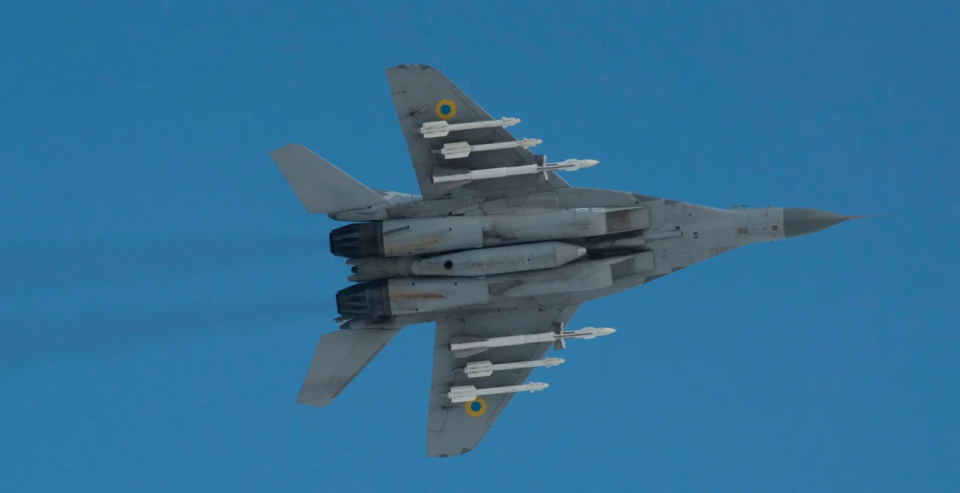
Because of this confidence that everything was already won for them, Russian pilots entered Ukraine with confidence and expecting no opposition.
“They acted arrogantly,” Andriy says.
“From February 24 to February 26, they were impudent. They were sure that there was no air defense left, and they acted as if they were at home.”
Therefore, all the planning and subsequent steps by Ukrainian aviation were related to "chopping off the Russians’ fingers." Only after the Ukrainians began to crack enemy planes like nuts did the Russians begin to change tactics.
“Our fighters shot down planes and cruise missiles under the cover of their own air defense,” Andriy recalls.
His squadron mate Dmytro notes that after the reconstitution of Ukrainian air defense, it became easier to operate in the skies and more effectively hit the enemy.
“We know the capabilities of our aircraft. They are not very perfect,” Dmytro explains.
Read also: Ghost of Kyiv mural unveiled in Ukrainian capital in celebration of Aviation Day
“ But we have air defense, which can help. Therefore, sometimes we flew like aerial targets: you would imitate certain actions and distract the enemy from you. While the Russians are trying to find you, they neglect other targets [ground-based air defense]. In tandem, it all worked."
Ukrainian pilots took great risks, but would nevertheless always fly to intercept enemy forces superior in numbers and technology, Ihnat said. They acted unexpectedly and maneuvered. The familiar terrain helped, because it would become more and more necessary to cling to the ground.
“It is clear that there were missile launches against them – this has always been the case in all these situations,” adds Ihnat.
“There were several air raids per day [every four hours], and ours flew to intercept. Accordingly, the invaders had to react. They had MiG-29 fighters flying at them: yes, they’re old, but they also have missiles and radar, and ground control is telling them where the Russians are flying.”
They knew what they were getting into
47-year-old fighter pilot first class Oleksandr Brynzhala, who also fought with the 40th tactical aviation brigade, repeatedly flew in these intercept missions. On the night of March 2, he and his partner took off to defend the capital against four Russian aircraft. However, it turned out that there were 12 enemy fighters. The Ukrainians did not turn back, and they engaged the enemy.
As recalled by pilot Andriy, who was monitoring the situation from the command post, Brynzala fired missiles at the enemy and knocked out, according to various sources, either one or two aircraft. His partner knocked out another one.
But for Brynzhala, this flight would be his last.
“There were many cases like Brynzhala’s,” Andriy notes.
“But this one was especially memorable.”
Read also: Popular aviation-themed clothing brand Aviatsiya Halychyny fundraising for military training jet
On March 13, 29-year-old Serhiy Taralka, another fighter pilot who many on social media were speculating was the Ghost of Kyiv, was killed in action . According to the Air Force, Taralka was killed in combat with superior enemy forces.
Fierce battles were also fought over the skies of Zhytomyr Oblast. As LTG Krivonozhko recalls, in March 2022, Russian aviation was trying to support the advance of their ground forces in this sector so that they completely cut off the approaches to Kyiv. The invaders failed to achieve their goal, even though there would be situations where 7 Ukrainian fighters took off against 15 Russian ones.
The Russians also heavily damaged the airfield in Zhytomyr Oblast. When Ukrainian planes took off one after another to engage their enemy, the Russians did not understand how it was possible.
“In a radio exchange which we had the opportunity to listen to, we heard them say ‘Where the fuck are they getting these from?’” Krivonozhko recalls.
The general explains that every Ukrainian pilot who died in battle understood that each flight could be their last, but no one shirked their duty.
“They knew that the enemy forces were much larger than ours,” he adds.
In total, in February and March, up to 10 Ukrainian fighter pilots may have been killed in action, Tomenchuk notes – in particular in Kyiv, Zhytomyr and Chernihiv Oblasts, where the main battles took place.
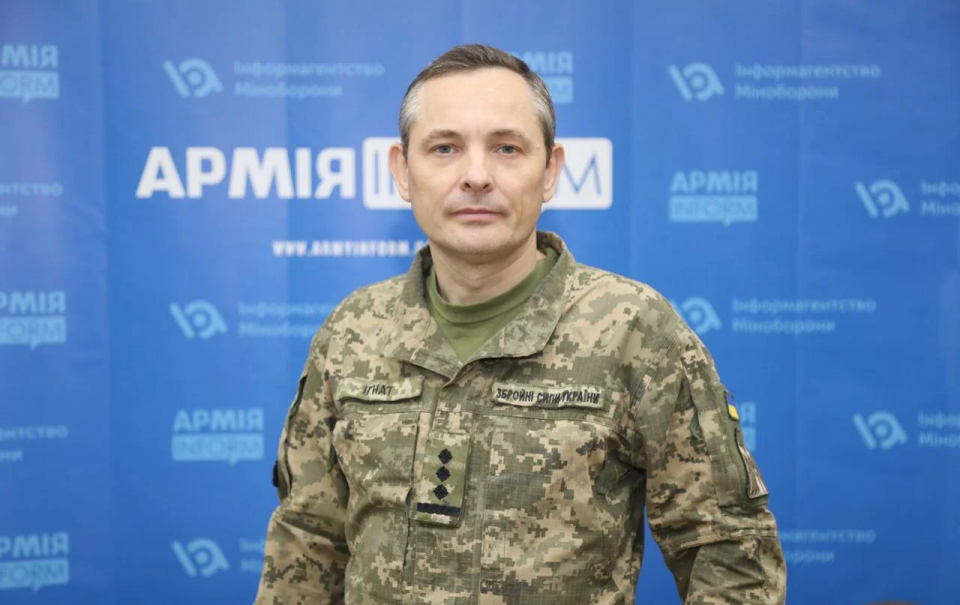
Air Command would only confirm to NV that eight pilots who belonged to the brigades under their command had been posthumously named Heroes of Ukraine.
There were also dead among Ukrainian attack and bomber aircraft pilots. The latter had engaged columns of Russian equipment which were advancing from different directions to encircle Kyiv.
“We had losses,” says Ihnat.
“But the contribution that the pilots made from the beginning of the fighting, and near Kyiv in particular, where there were also enemy columns, was invaluable.”
Lack of modern aircraft
Dmytro recounts that the expulsion of the enemy from Kyiv Oblast was achieved by the coordinated actions of all parts of the Armed Forces of Ukraine.
Russian aviation would stop flying into unoccupied Ukrainian territory only about a month and a half after the start of the full-scale war. The load on Ukraine’s pilots then decreased slightly.
“It was a small exhalation,” says Dmytro.
“It will be possible to exhale more when this is all over, but to exhale completely - never again.”
Read also: Ukraine’s Air Force Command reveals real identity of legendary pilot ‘Ghost of Kyiv’
Today, fighter pilots Dmytro and Andriy have returned to regular duty in central Ukraine. However, they also travel on rotation closer to the ground combat zone.
“We can do a lot, but we are limited now in our means by our airplanes,” Andriy explains,
“Comparing the modern [American] F-16 fighter with the MiG-29 is like comparing a new BMW against a Zhiguli. If we have the F-16, then our capabilities will be much greater.”
After all, what fighter pilots are doing now with four MiGs can be done with a single F-16, particularly shooting down more enemies with aviation itself.
According to the 40th Tactical Aviation Brigade, during the first year of the full-scale war, on its own without the help of air defense, the squadron’s pilots shot down 16 enemy aircraft and 2 helicopters.
We’re bringing the voice of Ukraine to the world. Support us with a one-time donation, or become a Patron!
Read the original article on The New Voice of Ukraine

